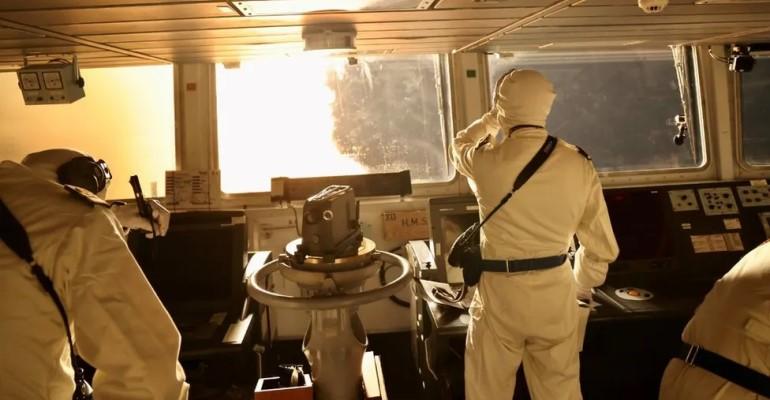Up to now Houthi attacks have been limited to coastal waters, mainly in the narrow Bab al-Mandeb strait and the Gulf of Aden, but the attack on the 15,000 teu MSC Orion occurred around 170 miles south of Yemeni controlled Scootra island.
The change in regional operations noted by security firm Dryad Global has also come with closer ties between disparate organisations, such as Somali pirates, and Somali Islamic organisation Al-Shabaab and the Houthi movement, which is also a major development, and could prolong the blockade of the Red Sea and Suez Canal thoroughfares.
As a result, Dryad Global CEO Corey Ranslem noted: “In recent months, we have seen a number of incidents involving the expansion of their operational area into the Indian Ocean.”
Dryad Global also point out that the necessary defensive capabilities against drones are either unavailable or prohibitively expensive for civilian organisations, making their reliance on the coalition forces more important.
However, Ranslem said: “I don’t know if this expansion makes it more difficult for the coalition to protect commercial shipping as they have been doing a good job protecting the vessels to this point.”
Ranslem added that the majority of incidents have only caused minor damage to commercial vessels, but most of the attacks have been thwarted.
“I would believe that coalition forces are able to adjust their operational areas to combat the changing threats within the region,” said Ranslem, while also emphasising, “We are still recommending to our clients that they avoid this region altogether.”
Security consultancy Dryad Global explains that the Houthi’s ability to broaden their sphere of operations is based on better intelligence gathering.
Dryad’s intelligence analyst Scarlet Suarez explained: “The Iranian company Rahbaran Omid Darya Ship Management Company owns the MV Behshad, a general cargo ship built in 1999, which operates under the flag of Iran. She is suspected of being used as a command post and spy ship by the Islamic Revolutionary Guard Corps, as well as a front for the Islamic Republic of Iran Shipping Lines.”
Suarez said the MV Behshad provided C2 [command and control] intelligence to the Houthis in the Red Sea and Gulf of Aden, allowing them to target commercial vessels more effectively. The Houthis, in collaboration with Somali pirates and Al Shabaab, can hijack vessels and also launch UAS [unmanned aircraft systems] and drone strikes in the Indian Ocean at this time.
Iranian support “is a given” said Dryad and the Houthi’s robust supply chain, targeting coordination with the Behshad “and confirmed coordination with Al-Shabaab and Somali piracy entities can definitely give them opportunities to attack any commercial vessel they choose,” remains a concern, according to Ranslem.
“This sudden resurgence of piracy is not homegrown, but it demonstrates a high level of coordination between the Houthis and Somali pirates, including elements of Al-Shabaab,” he added.
Suarez also made the link between Somali pirates and militant Islamic organisation Al-Shabaab: “Their attempt to use the Ruen [which was hijacked by Somali pirates in December and freed by Indian Navy action in March] as a mothership demonstrates that plans are in place to expand operations. Smaller boats following or approaching commercial ships from the Gulf of Oman into the Indian Ocean may indicate a coordinated effort to expand operations.”
According to Suarez Somali pirates collaborated with Al-Shabaab to facilitate the hijacking of the Ruen, and they worked directly with Houthi elements during the negotiations.
Moreover, Suarez comments: “The hijacking and ongoing hostage situation with the crew of the Galaxy leader revealed direct links between the Houthis and Hamas. While all of these elements may not always collaborate closely, there have been reports of coordinated efforts to attack coalition and commercial vessels.”
Copyright © 2024. All rights reserved. Seatrade, a trading name of Informa Markets (UK) Limited.
Add Seatrade Maritime News to your Google News feed.  |
